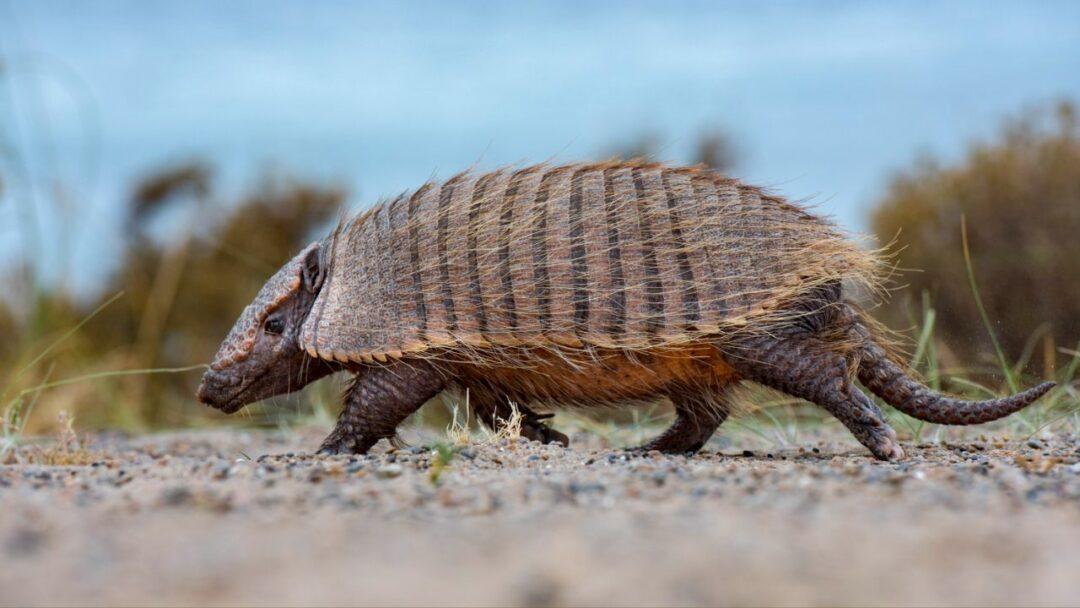Table of Contents

Introduction
Armadillos are fascinating creatures that pique our interest with their armored appearance and unusual behaviour. In this post, we will dig into the world of armadillos and discover ten amazing, little-known facts about these extraordinary creatures. We’ll discover the truths, debunk the myths, and emphasize their importance in the ecosystem, from their numerous species to their strange features.
10 Fascinating Facts About Armadillos
- Extensive Species Diversity: Contrary to popular belief, armadillos are not a single species but a diverse group of mammals. There are about 20 species of armadillos, each with its own unique characteristics and adaptations.
- Armored Protection: Armadillos possess a tough exoskeleton composed of bony plates called scutes. These scutes provide a protective armor that covers most of their body, shielding them from predators.
- Incredible Digging Skills: Armadillos are skilled diggers, using their strong claws to create burrows for shelter and foraging. Some armadillo species are proficient enough to dig tunnels that span up to 25 feet long!
- Efficient Insectivores: Armadillos primarily feed on insects and invertebrates, including ants, termites, beetles, and worms. Their strong sense of smell allows them to detect the slightest movement of their underground prey.
- Unique Reproductive Strategy: Armadillos exhibit a remarkable reproductive trait known as “delayed implantation.” After mating, the fertilized eggs remain dormant in the female’s uterus for several months before implanting and initiating pregnancy.
- Excellent Swimmers: Despite their bulky appearance, armadillos are surprisingly adept swimmers. They can inflate their stomachs with air, allowing them to float and traverse bodies of water with ease.
- Exceptional Hearing Abilities: Armadillos may have poor eyesight, but they compensate for it with acute hearing. They can detect the faintest sounds, including the movement of underground insects, aiding them in locating their prey.
- Solitary Nocturnal Creatures: Armadillos are predominantly solitary animals that are most active during the night. They rely on their excellent sense of smell and hearing to navigate and locate food under the cover of darkness.
- Mysterious Jumping Behavior: Some species of armadillos, such as the three-banded armadillo, exhibit a unique defensive behavior called “vertical jumping.” When threatened, they can jump vertically up to three feet, surprising predators and providing an opportunity to escape.
- Remarkable Longevity: Armadillos have an impressive lifespan compared to other mammals of similar size. Some species can live up to 15 years in the wild, while captive armadillos have been known to reach ages of over 20 years.
Mysterious Facts and Myths
- The belief that armadillos can transmit leprosy to people is widely held, but the danger is exceedingly minimal. While armadillos can carry the bacteria that causes leprosy, human transmission is uncommon and requires intimate and persistent contact.
- Armadillos are frequently associated with the tale of the “nine-banded armadillo” as a carrier of magical abilities and protection against bad spirits.
Important to Ecosystem
Armadillos are important members of the environment. They help manage pest populations by preying on insects such as ants and termites. Furthermore, their digging actions aid in soil aeration and nutrient cycling, which benefits plant development and overall ecosystem health.
What are armadillos?
Armadillos are unique mammals known for their armored shell-like skin. They belong to the order Cingulata and are native to the Americas.
How many species of armadillos are there?
There are around 20 recognized species of armadillos, each with its own distinct characteristics and habitats. The most common species include the Nine-banded armadillo, the Southern three-banded armadillo, and the Giant armadillo.
Where do armadillos live?
Armadillos are primarily found in the Americas, ranging from the southern United States to Argentina. They inhabit a variety of habitats, including forests, grasslands, and deserts.
What do armadillos eat?
Armadillos are omnivorous creatures with a diet that primarily consists of insects, grubs, ants, termites, and other invertebrates. They may also consume fruits, small vertebrates, and plant matter.
How do armadillos defend themselves?
Armadillos have a one-of-a-kind defense mechanism in the form of an armored shell. They can curl into a ball when threatened, protecting their vulnerable soft underbelly. Some species of armadillo can also jump, dig, or run away from predators.
Are armadillos nocturnal?
Yes, most armadillo species are primarily nocturnal. They are more active during the night and twilight hours, venturing out to search for food while avoiding the heat of the day.
Can armadillos swim?
Yes, armadillos are proficient swimmers. Their ability to inflate their stomach and intestines with air allows them to float across water bodies. They can paddle using their strong limbs and can hold their breath for several minutes.
Do armadillos carry diseases?
The bacteria that causes leprosy (Mycobacterium leprae) can be carried by some armadillos, particularly the Nine-banded armadillo. The risk of contracting leprosy from armadillos, on the other hand, is extremely low and usually limited to direct contact with the animal’s bodily fluids or tissues.
Are armadillos social animals?
Except during mating season or when a female is raising her young, armadillos are generally solitary animals. However, as long as resources are plentiful, they can tolerate the presence of other armadillos within their home range.
How do armadillos reproduce?
Sexual reproduction is used by armadillos to reproduce. After mating, the female armadillo goes through a delayed implantation process in which the fertilized egg is not implanted in the uterus right away. Because of the delay, more synchronized births occur, resulting in litters of identical quadruplets.
Conclusion
Armadillos are amazing creatures with a plethora of unique characteristics. Their varied species, armored defense, amazing digging and swimming abilities, and distinct reproductive techniques make them an enthralling subject of research. Armadillos, as major contributors to the environment, perform pest management services and play a key role in preserving ecological equilibrium.
10 Fascinating Facts About Meerkats: NEXT POST




